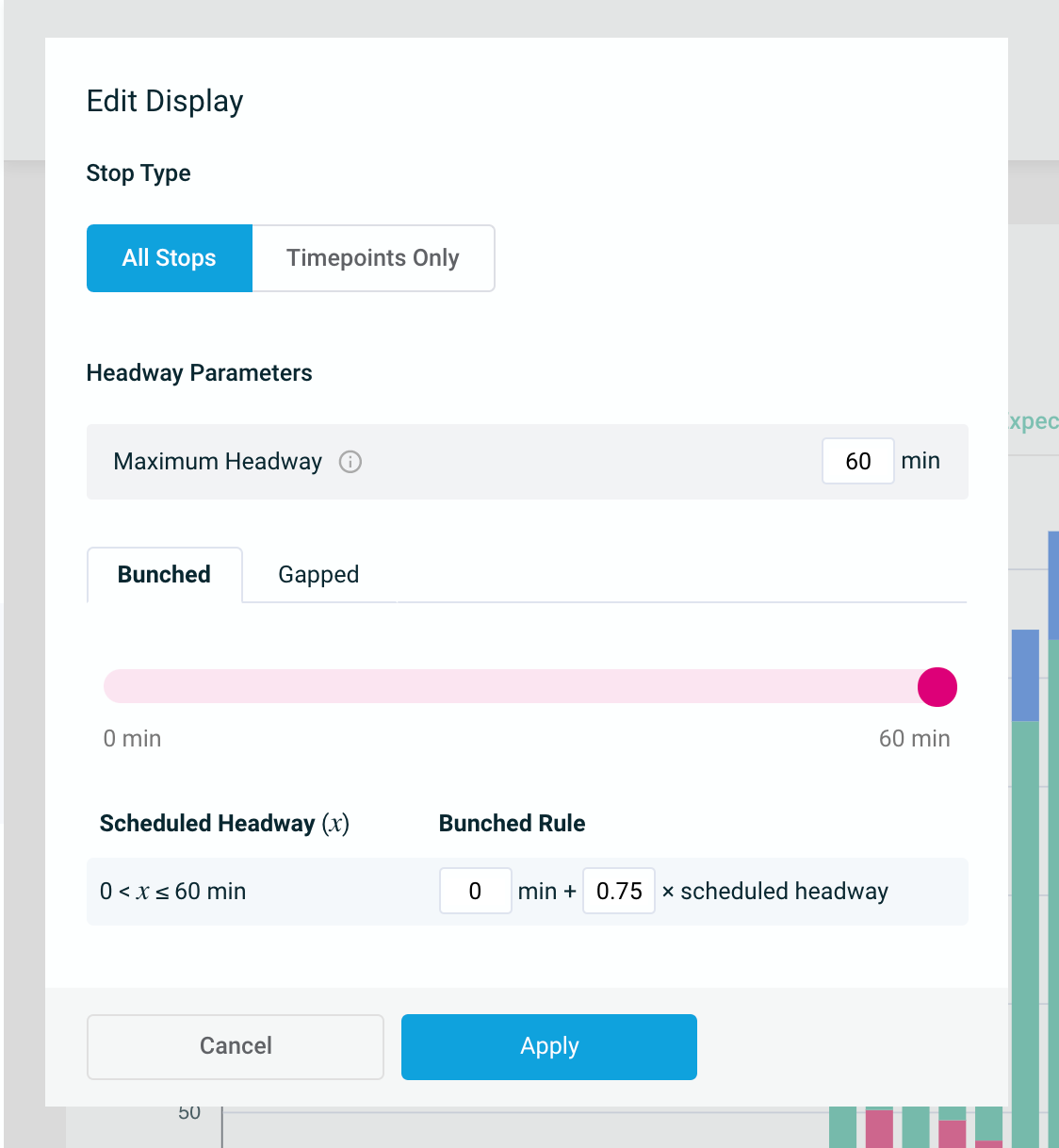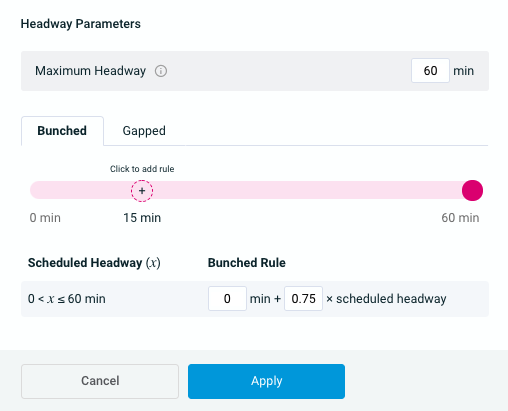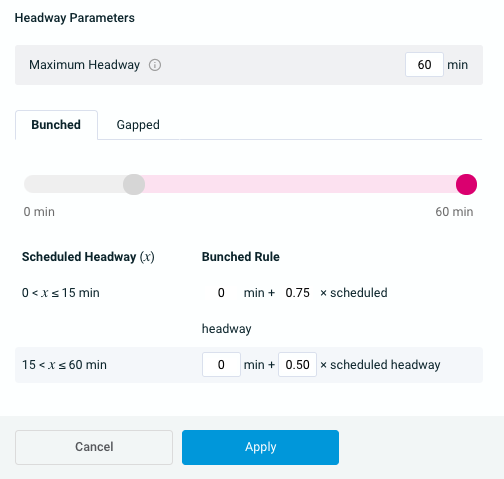In the Headway Insights product, you can adjust your headway parameters to match how your agency defines "bunched" and "gapped" vehicles. This will adjust the historical insights data in this product so it matches your agency's headway parameters.
In the Swiftly Dashboard, the initial headway parameters will have default settings. The default settings define bunched as 75% or less of the scheduled headway and gapped as 125% or more of the scheduled headway. Learn more about headway and how Swiftly calculates it in our dashboard.

How do the parameter changes work?
When editing the parameters, you'll have a few options to adjust your historical headway data:
- Maximum Headway: This adjustment allows you to define the maximum scheduled headway for which your agency would like to measure headways. The colored bar below will reflect the value you put in for maximum headway.
- Colored bar: By clicking and dragging the circle icon within the bar you can add additional bunched or gapped rules to your headway parameters based on the scheduled headways. For example, your agency might want stricter bunched rules for scheduled headways between 0-15 minutes, and looser bunched rules when scheduled headway is greater than 15 minutes.

- Scheduled Headway: This is the headway parameter for a specific rule. For example, if the time frame is 0 < x < 15, the rule will apply for when the scheduled headway is between 0 minutes and 15 minutes.
- Bunched/Gapped Rule: This is where one sets the rules for what is considered bunched or gapped for a specific scheduled headway.
Entering a new value for “x scheduled headway” would change the default percentage that’s applied to the scheduled headway indicating what vehicle is considered bunched or gapped. For example, changing the value to 0.50 for 15 < x < 60 min means that a vehicle running on a scheduled headway of 30 minutes would be considered bunched if it was less than 15 minutes away from the vehicle in front of it.
Entering in a new value for "min" will add time to your bunched rule. For example, if you define your bunched vehicle as 1 min + 0.75 x scheduled headway. Within this example, if your scheduled headway is 20 minutes, then a vehicle would be considered bunched when it is less than 16 minutes away from the vehicle in front of it. This may be useful for agencies that define their headway rules based on number of minutes (and not percent of scheduled headways).
Adding Rules for Different Scheduled Headways
There may be some cases where you'll want to apply different headway parameters based on different scheduled headways. Click anywhere along the colored bar to set an additional headway rule.
In the example below, the first rule was set to apply for scheduled headways between 0 and 15 minutes (more strict). A second rule was added to apply for scheduled headways between 15 and 60 minutes (less strict).


Comments
Article is closed for comments.